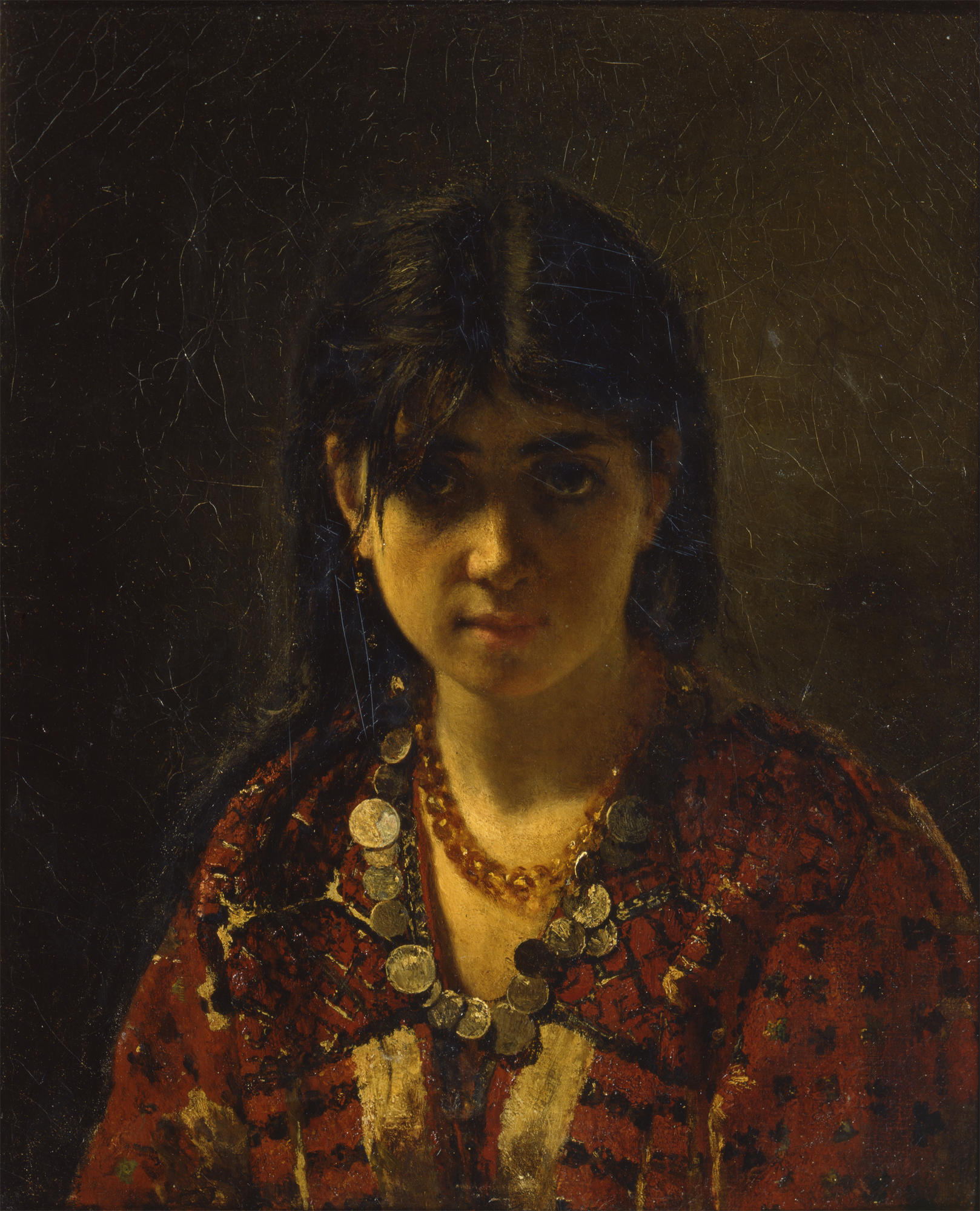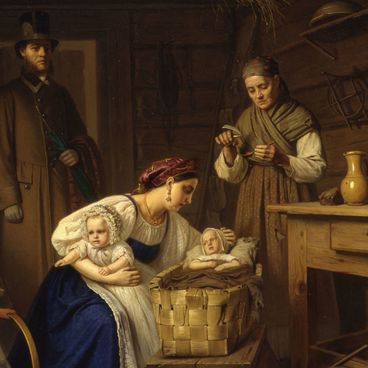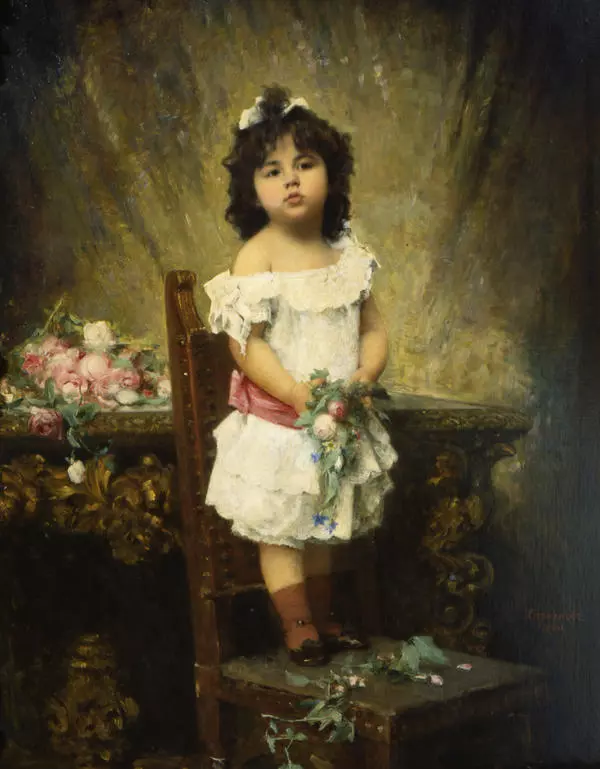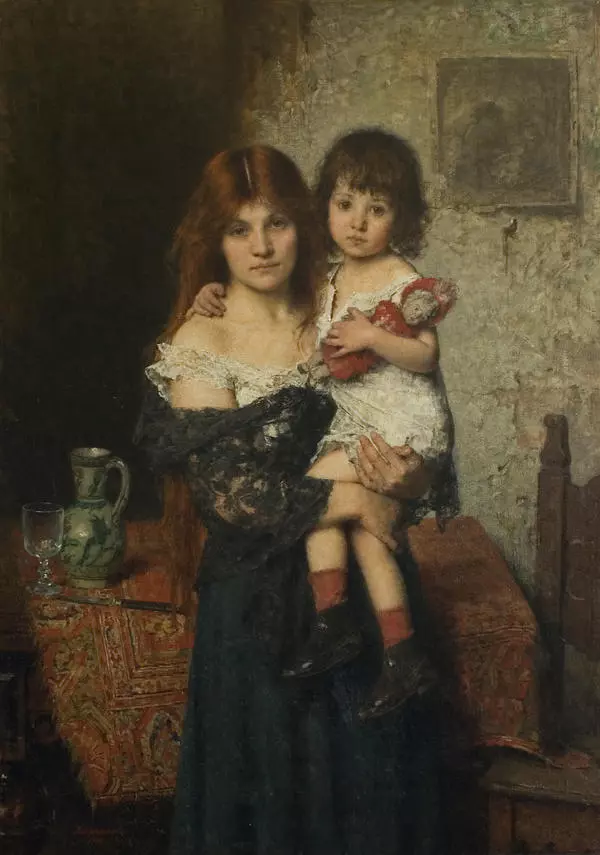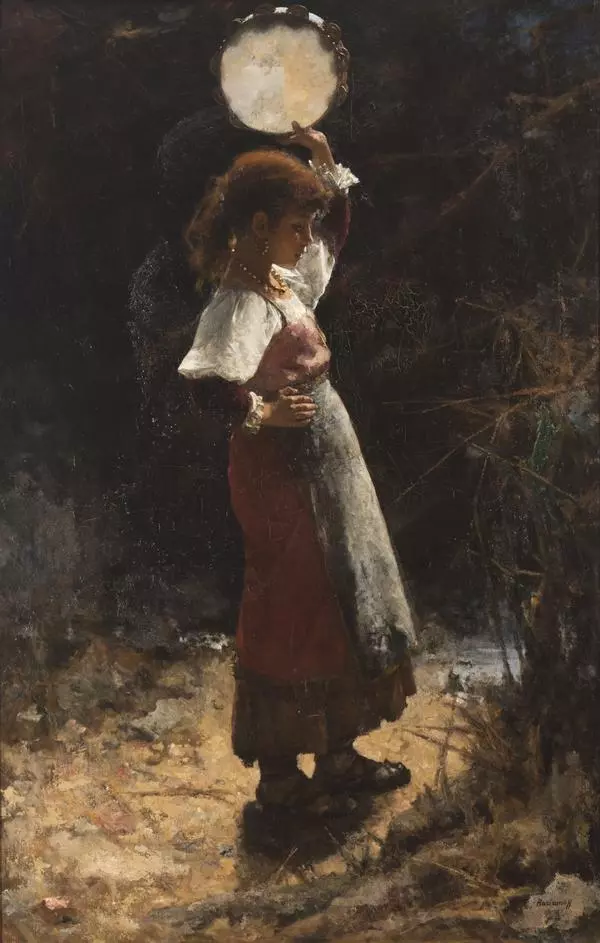On the canvas ‘Mordovian Girl’, Kharlamov portrayed a girl in Mordovian national costume Erzya. The model in his painting is dressed in a traditional robe decorated with embroidery.
Kharlamov is often termed as a salon artist. One of the journalists of that era wrote that his specialty was “children”s heads and scenes from children”s life.” The works of this sort were characteristic of salon art. When painting the “heads”, the painter, first of all, was guided by the tastes of his customers. His “heads”, designed to decorate a wealthy house, were as pleasant as salon painting in general.
‘Mordovian girl’ was painted during Kharlamov’s overseas pension trip after graduating from the St. Petersburg Academy of Arts with a Great Gold Medal. Shown in 1873 at the World Exhibition in Vienna, the Mordovian Girl became one of the paintings for which the artist received a bronze medal. The contemporaries' assessment of this work was a mixed bag. Critic Stasov, in his review of the Vienna World Exhibition, designated it as “greatly painted.” Kramskoy judged harsher: “When Bogolyubov pointed it out in a specially splendid manner, then, being a sinful person, I even admired it for about five minutes, but after looking around and passing from one part of the painting to another, I had to admit that all this was spurious, false, wrong, and eventually rejected it.” The remarkable thing is that the painting was acquired by Bogolyubov no later than 1874 (probably, immediately after the World Exhibition).
Kharlamov is often termed as a salon artist. One of the journalists of that era wrote that his specialty was “children”s heads and scenes from children”s life.” The works of this sort were characteristic of salon art. When painting the “heads”, the painter, first of all, was guided by the tastes of his customers. His “heads”, designed to decorate a wealthy house, were as pleasant as salon painting in general.
Various stylistic trends of the second half of the 19th century are interwoven in Kharlamov’s ‘Mordovian Girl’. It contains not only the echoes of romanticism and sentimentalism - it is no coincidence that contemporaries discerned in his ‘heads’ the influence of French artist of the 18th century Grez, but also features of realism (in choosing a theme and craving for psychologism) and eclecticism. The Mordovian, like many of the ‘heads’ by Kharlamov of the 1870s, evokes associations with the artwork by the Caravaggesque painters who worked in the Bamboccianti genre in Italy of the 17th century. They often painted scenes from folk life, which featured commoners, merchants, beggars, gypsies, etc. But Kharlamov does not address such motives, he just borrows the type and brush work. The colour palette of the painting is sustained in brown tones. Here we can talk about Caravaggio’s style known as Tenebroso, with its sharp chiaroscuro.
Note that the “heads” constitute most of Kharlamov’s creative heritage. Commercial success undoubtedly played an important role in their creation. But unlike the majority of Kharlamov’s “heads”, there is almost no tinge of sweetness in the Mordovian Girl. It is uncontroversial that this is one of the best works by Kharlamov.
